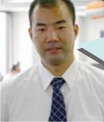|
|||||
| << July | September >> |
This is JAXA's primary activity report on Japanese astronauts for August 2004.
Astronaut Noguchi temporarily returned to Japan and has a busy schedule from August 25 to 31.It has been a while since his last visit, and if the Shuttle is launched in March as currently scheduled, this will be his final opportunity before his flight.
On 26 August he visited the Ministry of Education, Culture, Sports, Science and Technology and reported to former Minister Kawamura about the preparation of the Space Shuttle mission that will be the first flight after the Columbia accident. He also explained the primary task of the extravehicular activity, in which he will take the leading role. Minister Kawamura encouraged astronaut Noguchi and expressed his hope that the mission will be successful.
 |
| Astronaut Noguchi answering children's questions |
On 28 August he took part in the opening of JAXA's Sagamihara facility to the public. In a lecture intended for adults he spoke about NASA's activities for the Space Shuttle return to flight and about the enthusiasm for launch. The 100 seats were filled in no time, and many people stood to listen to him. He w"as also a teacher of the "mini-mini space school" titled Let's ask astronaut Noguchi questions" and answered questions about space. Children asked many questions like "What phenomena in space do you like best?", "Can you go to space with contact lenses?", and "How do you use the toilet in space?" Everybody enjoyed a pleasant time.
 |
| Astronaut Noguchi explaining Kibo to Minister Mogi |
On 30 August, former Science and Technology Minister Mogi visited JAXA's TsukubaSpaceCenter. In the clean room of the Space Station Test Building, astronauts Mohri and Noguchi explained the Japanese Experiment Module Kibo's components such as the Exposed Facility, the Remote Manipulator System, and experiments that will be mounted on Kibo for Minister Mogi.
 |
I returned to Japan in order to inform many more people about the efforts that all of NASA is making in preparation for the Space Shuttle's safe return to flight. This will be the last time that I come back to Japan before the flight. From now on, I will concentrate on training for the flight, and I hope to inform you about the training through this home page and news articles. During this homecoming, I had a chance to visit the Sagamihara facility, where many visitors to the facility encouraged me, and I renewed my determination to successfully complete the flight. |
In August, astronauts Furukawa, Hoshide, and Yamazaki continued Space Shuttle mission specialist candidate training.
Actual training began for fourteen astronaut candidates, eleven from NASA and three from JAXA, including two pilot candidates. Following the orientation necessary to conduct the training courses, land survival training was conducted.
 |
 |
| All fourteen candidates | JSC facility tour |
The astronauts received orientations necessary in order to participate in various future training courses. They prepared for the training courses while taking group pictures and took a facility tour of NASA Johnson Space Center.
 |
| Astronaut Yamazaki receiving survival training. |
 |
| Astronaut Hoshide (front group second from left) and Furukawa (front group right side) carrying the "injured" candidate from the woods. |
T-38 jet flight training will start in September. If for some reason astronauts have to escape from the aircraft, they will have to survive on their own for several hours or even days until the rescue team arrives. Land survival training provides them the necessary techniques to survive. During the training, they also cultivate a sense that each candidate is a member of a group of candidates who are undergoing training together, and learn leadership and teamwork skills necessary in actual space flight.
The training was conducted at the Naval Air Station in Maine. For outdoor training, they were given emergency food, a drinking flask, maps, a compass, and a poncho. A poncho is not only useful in rain but can also be used as a shelter, a stretcher, or a sleeping bag, and a parachute for emergency escape and its strings can be used in many ways, as well. Originality and ingenuity are the keywords of survival training. Candidates learned how to kindle a fire, provide emergency treatment, and to identify and eat edible plants. On the last day of the survival training, they participated in no-notice casualty rescue training. When a person is injured, he or she must be carried to a place where a helicopter can be used for evacuation. During this final training, the instructor just watched what the candidates did. The candidates cooperated with each other to accomplish all of the tasks, such as rescue planning, tool preparation, and casualty care.
 |
| Astronaut Doi giving a lecture to the students |
From August 18 to 28, 125 students of TakasakiHigh School and Takasaki Girls' High School of Gunma Prefecture, both specified as Super Science High Schools, went to the USA for an induction ceremony and visited NASA facilities. When they visited Johnson Space Center (JSC), astronaut Doi gave a lecture primarily about the extravehicular activity that he performed during the STS-87 mission. Also, Ms. Keiko Nakamura, who is researching interstellar dust and meteorites at NASA, talked about her research. In the Q&A hour, many questions were asked like "What is the difference between Neutral Buoyancy Laboratory EVA and actual EVA?" not all of which could be answered within the hour.
| << July | September >> |

|